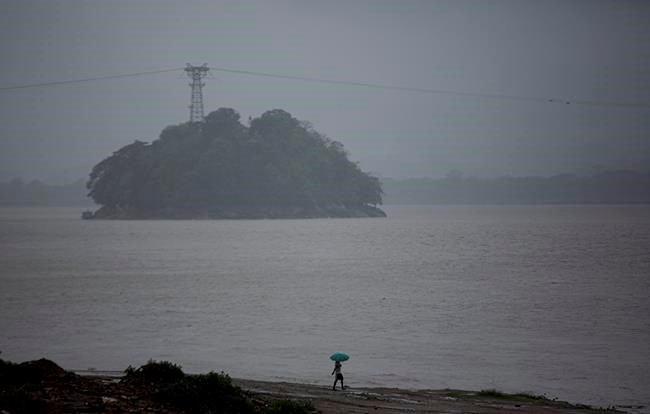NEW DELHI — Wide swaths of coastal India and Bangladesh were flooded and millions were without power Thursday as Cyclone Amphan, the most powerful storm to hit the region in more than a decade, killed over 80 people and cut a path of destruction that is still being assessed.
Many parts of the Indian metropolis of Kolkata, home to more than 14 million people, were under water, and its airport was closed briefly by flooding. Roads were littered with uprooted trees and lamp posts, electricity and communication lines were down and centuries-old buildings were damaged.
Officials in both countries said the full extent of the damage caused by the cyclone was not known because communications to many places were cut. Hundreds of thousands of people were evacuated ahead of the storm, a process complicated by the coronavirus pandemic.
Amphan came ashore Wednesday with heavy rain, a battering storm surge and sustained winds of 170 kph (105 mph) and gusts up to 190 kph (118 mph). It devastated coastal villages, knocking down mud houses, tearing down utility poles and uprooting trees.
“I have never seen such a disaster before,” said West Bengal chief minister Mamata Banerjee, adding that the government would pay the equivalent of $3,310 to families who lost a relative in the storm.
At least 74 people were killed in India, with most of the deaths in West Bengal state, which includes Kolkata. Broadcasters in Bangladesh reported 13 were killed in that country.
“The roofs of many homes have flown away and the streets are waterlogged," said Shuli Ghosh, who runs a cafe in Kolkata.
With many of its streets still flooded and phone and internet service not fully restored, officials said they were trying to determine the extent of damage in the capital of West Bengal state.
Indian Prime Minister Narendra Modi said authorities were working to get all possible assistance to victims of the cyclone.
“No stone will be left unturned in helping the affected,” he tweeted.
About 10 million people in Bangladesh remained without electricity, said Moin Uddin, chairman of the Bangladesh Rural Electrification Board.
Hundreds of villages were flooded and shelters were unable to run at full capacity in many places due to the coronavirus. Some people were too scared about the risk of infection to go there.
The pandemic also will affect relief efforts and the recovery. Damage from the storm is likely to have lasting repercussions for the poor, who are already stretched to the limit by the economic impact of the virus.
In an initial assessment in Bangladesh, Enamur Rahman, the country's junior minister for disaster management, said the cyclone caused about $130 million in damage to infrastructure, housing, fisheries, livestock, water resources and agriculture.
A total of 1,100 kilometres (over 680 miles) of roads, 150 flood-protection embankments and nearly 200,000 shrimp farms have been damaged in 26 of 64 districts, Rahman said in a news conference, adding that crops on 200,000 hectares (over 494,000 acres) have been damaged.
In India’s Odisha state, the cyclone destroyed crops of betel, a leaf used as a wrapper for chewing areca nut or tobacco. In Bangladesh’s southwestern district of Bagerhat, more than 500 fish farms were flooded.
Debashish Shyamal, who lives in a fishing village along the West Bengal coast, took shelter with his family in a government clinic. He said the wind blew open the windows and doors and for hours they huddled inside, drenched by the torrential rain.
On Thursday, he discovered dangling electricity wires, waterlogged streets and an uprooted forest.
“There is nothing left,” he said.
Banerjee ordered a drive to plant mangroves in the Sundarbans, a low-lying delta region of about 200 islands in the Bay of Bengal where about 13 million impoverished Indians and Bangladeshis live. The area is best known for being home to thick mangrove forests and Bengal tigers.
The region is no stranger to devastating cyclones, and the mangrove forests act as a barrier, absorbing the impact of the storms, said K.J. Ramesh, the former chief of India’s meteorological department. The cyclone had passed directly through these forests, officials said.
Ramesh said the storms' intensity has increased due to changing climate patterns. Cyclones get their energy from warm ocean waters, and the amount of heat trapped in the top 700
“As a result, cyclones are intensifying faster than before,” he added.
—-
Alam reported from Dhaka, Bangladesh. Associated Press writers Chonchui Ngashangva and Aniruddha Ghosal in New Delhi contributed.
Sheikh Saaliq And Julhas Alam, The Associated Press


